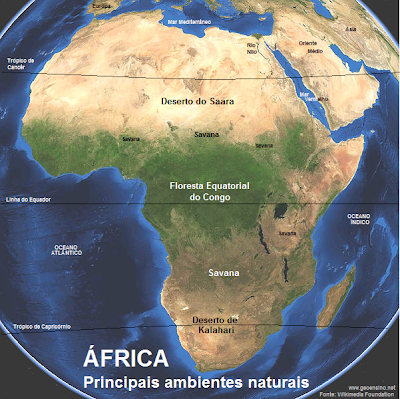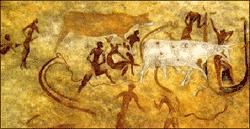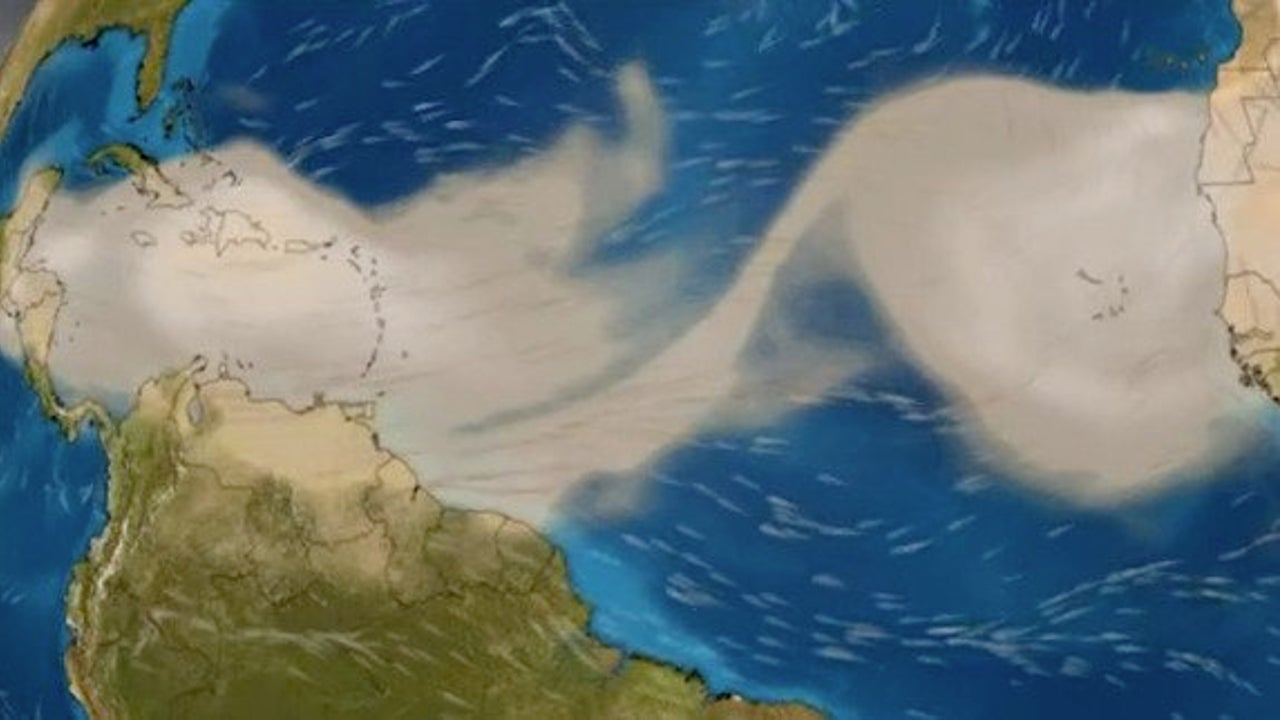Do you know the term "Mineral Dust"? Mineral Dust is aerosols in the atmosphere that allow the formation of clouds. It is very difficult to form cloud droplets without small aerosol particles acting as “seeds” to start their formation! This mineral dust plays a very important role in the climate system and the ecosystem's maintenance!
Sahara dust carried by the wind to the Americas. Source: National Oceanic and Atmospheric Administration, youtu.be/J7ORTZcqD68.
How? Through the biogeochemical interactions of macro and micronutrients that fertilize the oceans and continents! Each pulse of Dust Mineral influences biology and climate in places thousands of miles away from the source.
Arid and semi-arid regions are the main global sources of mineral dust. In these environments, these particles are lifted into the atmosphere by the wind action, transported, and deposited far from their origin. The Sahara Desert in North Africa is the largest, and the most consistent source of mineral dust in the world (National Geographic, 2020)! But what does this have to do with Amazon?
Mineral Dust from the Sahara Desert crosses the Atlantic Ocean, exceeding 3,000 kilometers away, and reaches the Amazon, helping to fertilize terrestrial plants and phytoplanktons! Phytoplankton is aquatic microscopic organisms capable of photosynthesis, being the basis of the food chain in aquatic environments. Thus, millions of tons of mineral dust particles are eroded each year from the Sahara desert soils and are blown over the Atlantic Ocean to the Amazon basin (Gross et al., 2015).
But has the Sahara always been the biggest source of Mineral Dust for the Amazon?
Well, Nogueira et al. (2021) carried out a study on a lake located in a remote area of the Amazon rainforest, Lago Pata (Figure 1). One of the findings is that the Sahara dust influence on the Amazon basin is probably limited geographically and that fertilization by the Sahara cannot be generalized across the entire Amazon basin.
Besides, the study indicates that the Sahara Desert may not be the only source of dust that reaches the Amazon basin. On long-term time scales, the sedimentary record in Lago Pata points to African deserts (Figure 2), both north of the country and south, as well as the soils of the central and Argentine Andes, as potential contributors. Southern Africa is more important than the Sahara Desert for this sector of the Amazon basin during the middle to late Holocene (~ 8,000 years ago and extending to the present)!

Figure 2. African continent main environments. Source: GeoEnsino, www.geoensino.net/2012/08/ambientes-naturais-do-continente
The study suggests that the flow of dust from the Sahara to Lake Pata, during the middle Holocene, has decreased by up to five times compared to the current contribution, which coincides with the African Wet Period (14.8 - 5.5 thousand years ago). In that period, instead of being the sandy desert we now know, the Sahara was covered with grass and shrubs. In this environment, hunters domesticated buffalo and goats and developed an initial symbolic art system (NOAA) (Figure 3).

Figure 3. Hunters domesticated buffalo and goats and developed an early symbolic art system. Source: www.ncdc.noaa.gov/abrupt-climate-change/End%20of%20the%20African%20Humid%20Period.
The study estimated lesser contributions of mineral dust from the Sahara over the past 7,500 years. The contribution of the Sahara to the western Amazon varied from 4 to 10%. The other contributions were from the south of the African continent (10 to 50%), from Bolivian/Peruvian soils (8 to 11%) and, Argentine soils (13 to 15%).
Did you find it interesting? Check out the video that NASA developed to explain the transport of Mineral Dust from the Sahara Desert to the Amazon basin.
The original video can be found here: https://youtu.be/ygulQJoIe2Y
References
Alejandra Borunda, National Geographic. 2020. https://www.nationalgeographic.com/science/2020/06/concerned-saharan-dust-plume-crucial-to-ecosystem/
National Oceanic and Atmospheric Administration (NOAA). https://www.ncdc.noaa.gov/abrupt-climate-change/End%20of%20the%20African%20Humid%20Period
Gross, A., Goren, T., Pio, C., Cardoso, J., Tirosh, O., Todd, M. C., Rosenfeld, D., Weiner, T., Custódio, D., & Angert, A. (2015). Variability in sources and concentrations of Saharan dust phosphorus over the Atlantic Ocean. Environmental Science & Technology Letters, 2(2), 31-37.
Nogueira, J., Evangelista, H., de Morisson Valeriano, C., Sifeddine, A., Neto, C., Vaz, G., … & Shimizu, M. H. (2021). Dust arriving in the Amazon basin over the past 7,500 years came from diverse sources. Communications Earth & Environment, 2(1), 1-11.


